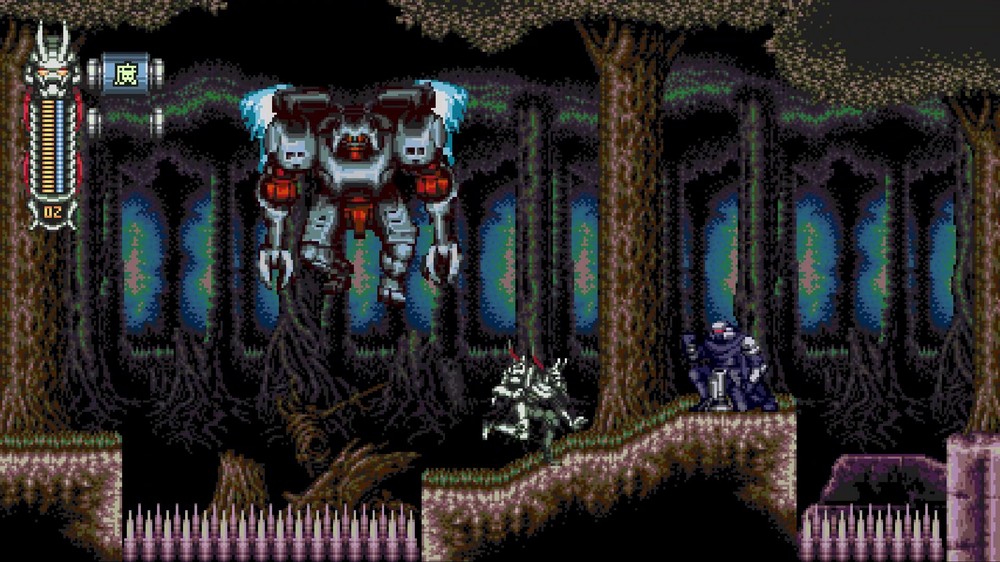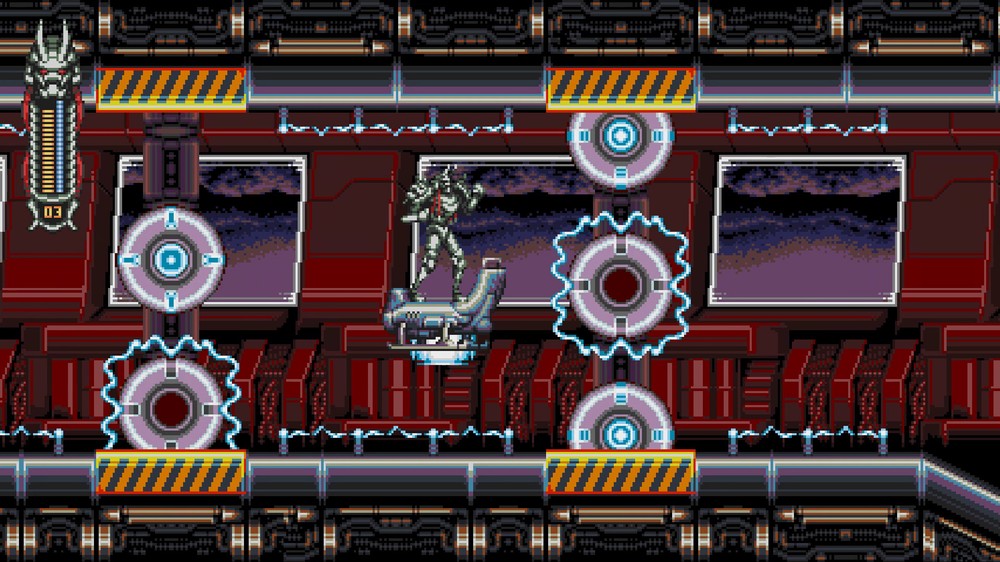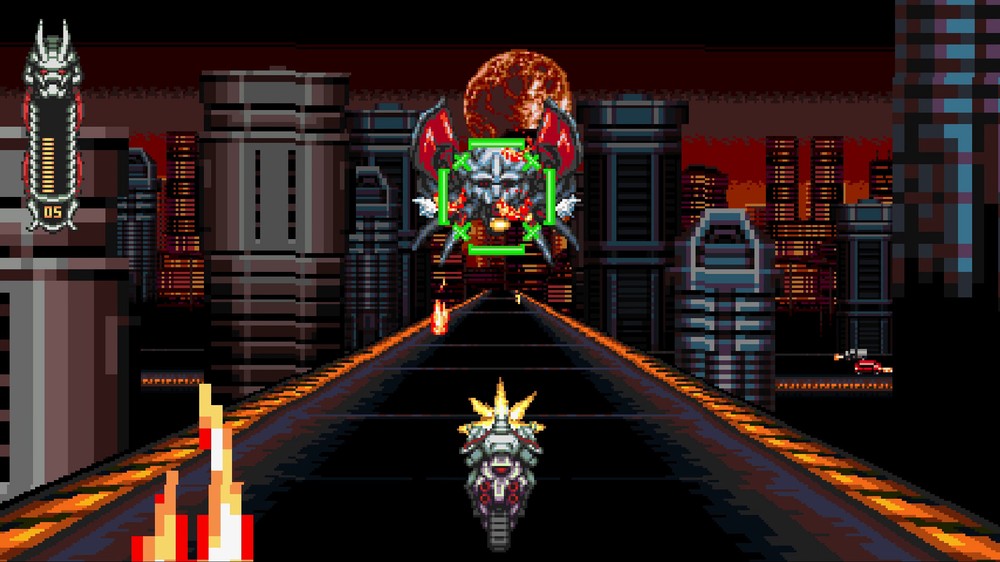When a game promises players nostalgia, it’s hard to not latch onto it, in the hope of recapturing just a second of an old feeling. In the case of Joymasher’s latest blast from the past, Vengeful Guardian: Moonrider, the throwback developer plays on the 16-bit memories of Ninja Gaiden, Shinobi, and Mega Man. Equipped with great looking graphics, a catchy soundtrack, and eight campaign levels, they’ve done a great job of capturing the late-80s vibe and delivering a game that’s fun to play. There’s enough here to convince you that you’re in a room with a Sega Genesis, but the game does have its share of issues in the form of its short length and difficulty. Regardless, the game is still fun, but these shortcomings keep it from being something truly great.
Vengeful Guardian: Moonrider puts players in control of the titular Moonrider, a super soldier built to help preserve the totalitarian state. By the start of the game, Moonrider finds new meaning in life and turns against his creators and their oppressive ways on the human populace. A lot of the plot takes a backseat to the action, but there are splashes of story in the form of short cutscenes between levels and monologuing bosses prior to boss fights. The monologues dive into Moonrider’s newfound purpose and give the bosses a little more flavor to make them standout. At its heart, the story plays with themes around fighting for change and striking down evil. It carries a little bit of weight with it, but overall, it doesn’t take itself too seriously.

Anyone who has played Mega Man in the last 36 years will immediately recognize the Blue Bomber’s influences on Vengeful Guardian: Moonrider. The health and power bar is practically identical. So is the core gameplay loop; fight through level, fight mini-boss, continue further into level, fight boss, win and get new power. The new powers you collect are handy as you venture into the other levels. For example, take the mini-boss in the water plant level. With no-powerups this fight will challenge your platforming and combat skills. If you’re fortunate enough to start this level with the Darkportal or the wind gust weapons, this fight becomes a nonissue. This is one of the main issues with the game. It’s too easy.
Never mind unbalanced weapons like the aforementioned Darkportal, that lets you rip through enemies like they’re nothing. The most important portions of the game, the boss fights, can be breezed through. Each level’s boss has a pattern of attack for you to learn and a weakness for you to exploit, in the form of one of the other weapon pickups. The thing is you don’t need them. You can strong-arm these bosses by swiping them with your base weapon and dodging a few of their attacks. This tried-and-true strategy worked for me all the way up to the final boss, who required a little more maneuvering.

Each level’s mini-boss also fared better and required a change-up from my aggressive playstyle to top them. There are power-ups (called modifier chips) that can alternate the game’s difficulty. One such chip ends a level immediately if you take any damage. It’s a nice addition, I only wish there were more modifier chips that upped the difficulty. I found that a majority of them were more on the helpful side and less on increasing the difficulty.
Playing on the Switch, handheld or docked, the game looks great. I couldn’t help but think of the Sega Genesis’ classics from my youth. The moody and frantic soundtrack adds to the classic feel and fits each level well. From hitching rides across aircrafts as lightning strikes them down, to exploring the ruins where an ancient evil has been awoken, Moonrider’s adventure takes you through numerous locales you come to expect from 2D action-adventures. It does go back to the well a few too many times with certain segments. One example are the two separate motorcycle sections that are nearly identical. I also wasn’t a fan of some of the level designs.

You have the ability to bounce off walls and jump to opposite ledges. A handful of times these wall jumps did not line up perfectly and required dropping down a bit to perfectly align the jumps. There are also a few instances of backtracking, either to solve a puzzle or to pick up a modifier chip. A saving grace of the game is its level ranking system and an emphasis on speed-running levels, so while the level designs have issues, they become less of a bother once you start replaying levels to optimize your path and improve your overall rankings and completion times.
You’ll complete Vengeful Guardian: Moonrider in about two-and-a-half hours. It’s not super long, but the levels have some replayability as you start to mix-n-match modifier chips and weapons in an attempt to best your previous rankings and times. Sadly, there are no harder difficulties or leaderboards, so the reasons to return to levels start to thin once you’ve hit that desired ‘S’ rank.

While it lacks difficulty options and is short in length, Vengeful Guardian: Moonrider is a good looking and great sounding imitation of Sega Genesis action-adventure games. With an emphasis on speed-running and combat efficiency, it offers players a quick in-n-out nostalgia trip that doesn’t require blowing on a cartridge.











